This post may contain affiliate links. Please read our disclosure policy.
How to Butterfly a Chicken Breast using a safer, easier method.
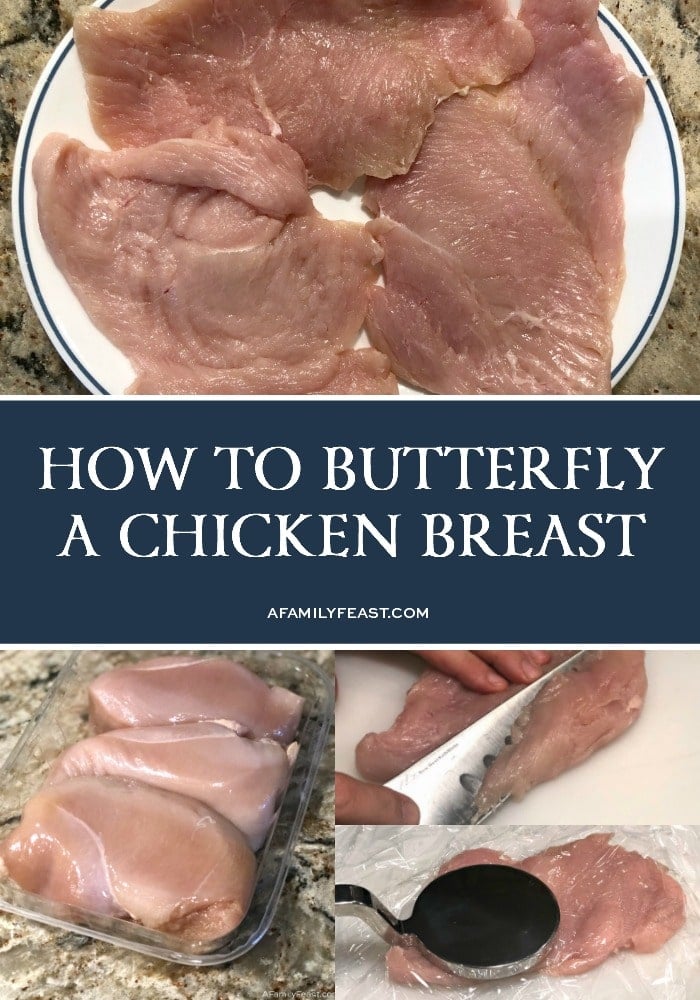
We’re back today with another cooking lesson, teaching you How to Butterfly a Chicken Breast.
When you butterfly your chicken, it will cook more quickly, as well as more evenly. You can also use this method on any other kind of poultry such as turkey or duck, and you can even butterfly a pork tenderloin, or other meats.
Our butterflying method today is safer and easier than most other methods, and the way my husband Jack learned how to do it culinary school.
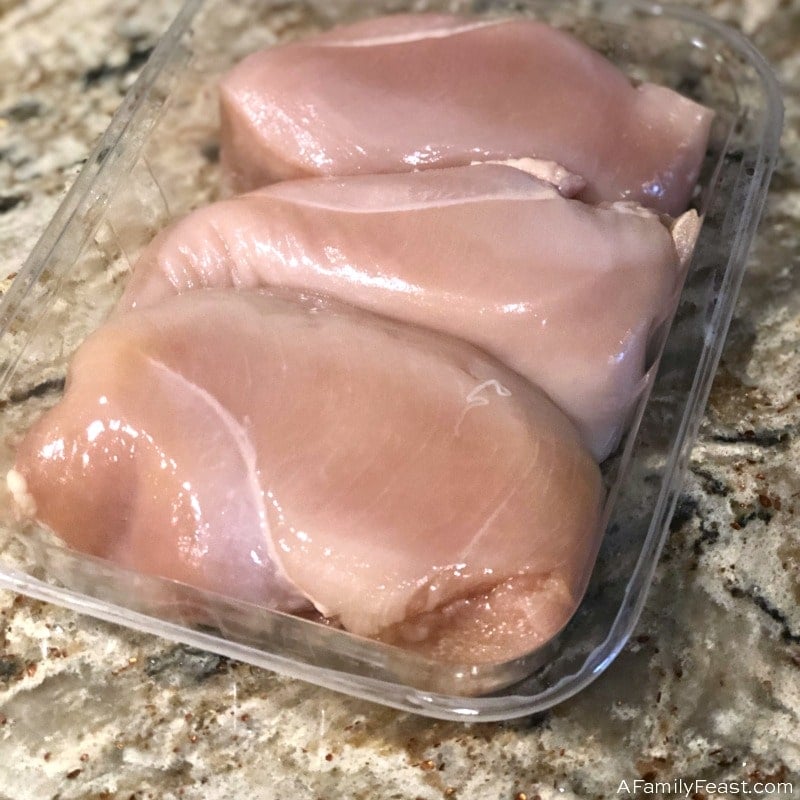
What does it mean to butterfly chicken (or any kind of meat)?
Take any boneless, skinless chicken breast out of the package – and you’ll have one end that is thicker than the other. If you simply cook the chicken as is – the plumper end will take longer to cook, and the thinner end will be dried out.
Butterflying is a culinary term where you’ll cut the chicken in such a way that the meat will have a flatter, more uniform thickness before cooking.
Many (actually most) other tutorials explain butterflying as simply slicing the breast horizontally, almost in half, then spreading open the breast meat like a book (or butterfly – which is where the name originated). This method works – but for the average home cook, it can be tricky and even a little dangerous to do.
First – that typical method has you press down on the breast with the palm of your hand, and then slice the breast in half horizontally. Unless you get the blade perfectly centered – you could end up with uneven halves. You could also accidentally slice the palm of your hand open! Additionally, you may end up butterflying the thinner end of the breast as well as the thicker end – and that negates the entire purpose of doing it in the first place.
A saver, easier way to butterfly chicken
Jack’s method of butterflying a chicken breast starts from the center out – and all cuts are with the sharp side of the blade pushed away from you, not towards you. Additionally, the palm of your hand won’t be anywhere in danger of getting sliced open.
Here are the steps:
First, trim off any excess fat or other loose bits leftover from the butchering process. (We save these pieces in a bag in the freezer, then add them to the pot when we make our homemade chicken stock.)
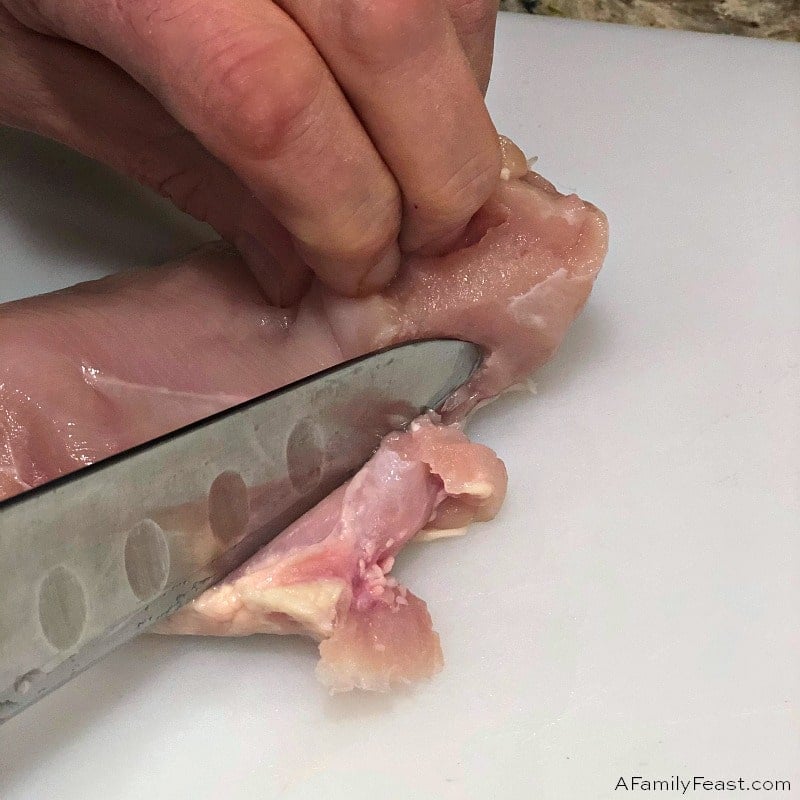
Lay the breast onto a cutting board, skin-side down (this is the side of the breast that originally had the skin attached).
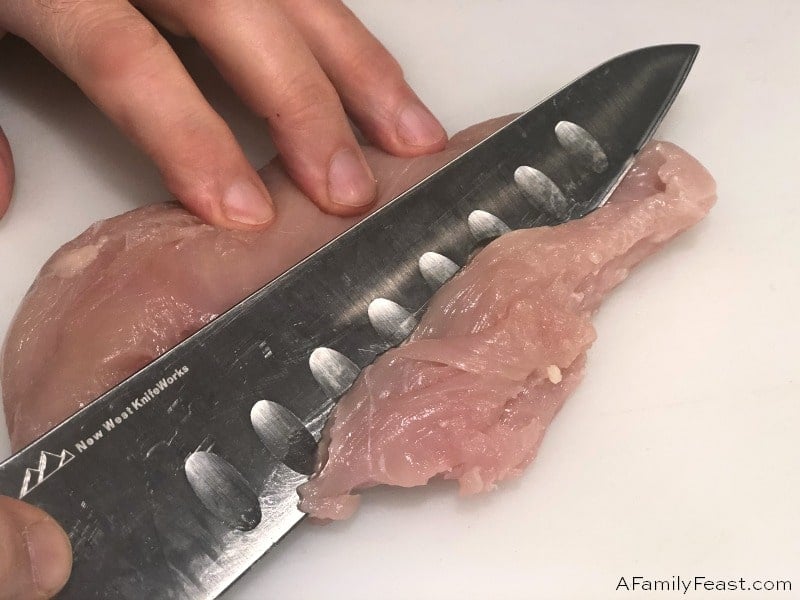
Using a very sharp chef’s knife, position the blade parallel with the cutting board and face the blade against the tenderloin, where the blade and tenderloin faces away from you. Slice into the center of the tenderloin not quite to the end and using the blade, flop the section over with the meat still attached.
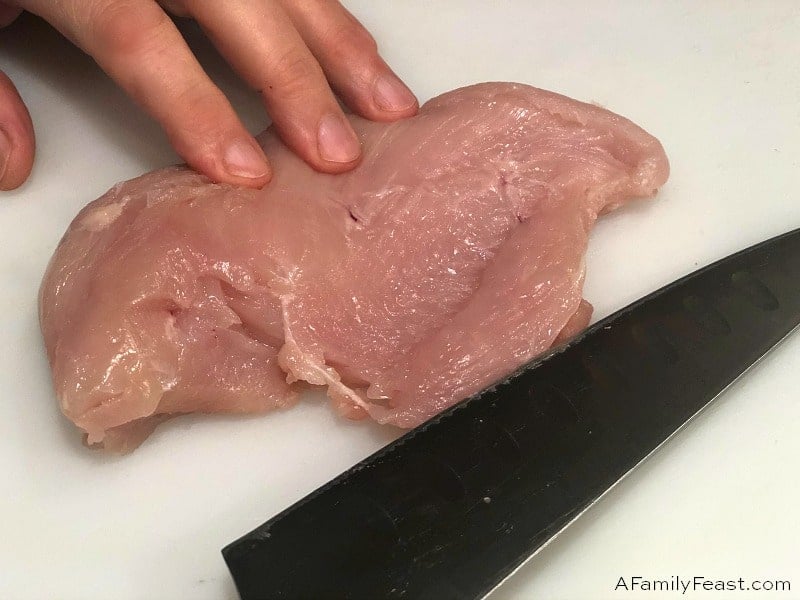
Spin the breast around so that the tenderloin is towards you and position the knife blade against the thick part that is left. Slice into this section through the center away from you, not all the way to the end and flip that piece over.
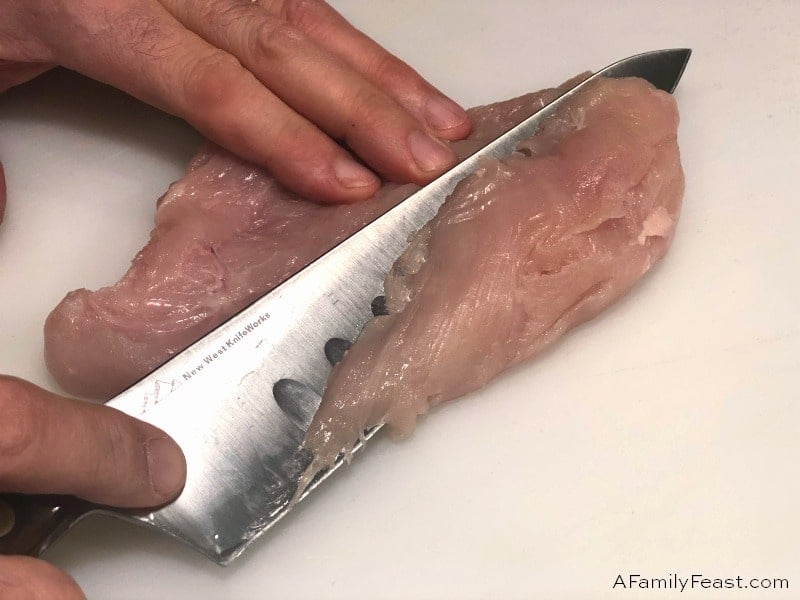
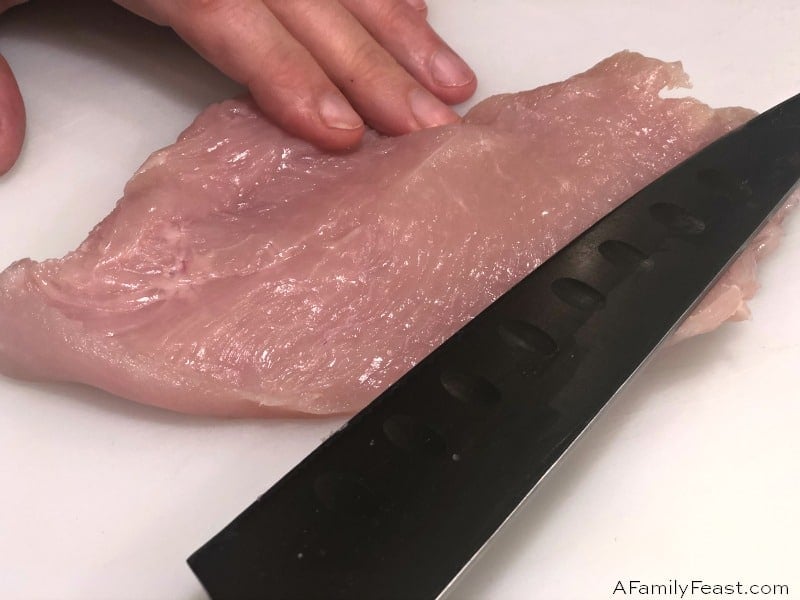
Depending on how thick the breast is, you could take a third cut into any thick sections left and butterfly further but usually two cuts are enough. You end up with a breast of uniform thickness like this:
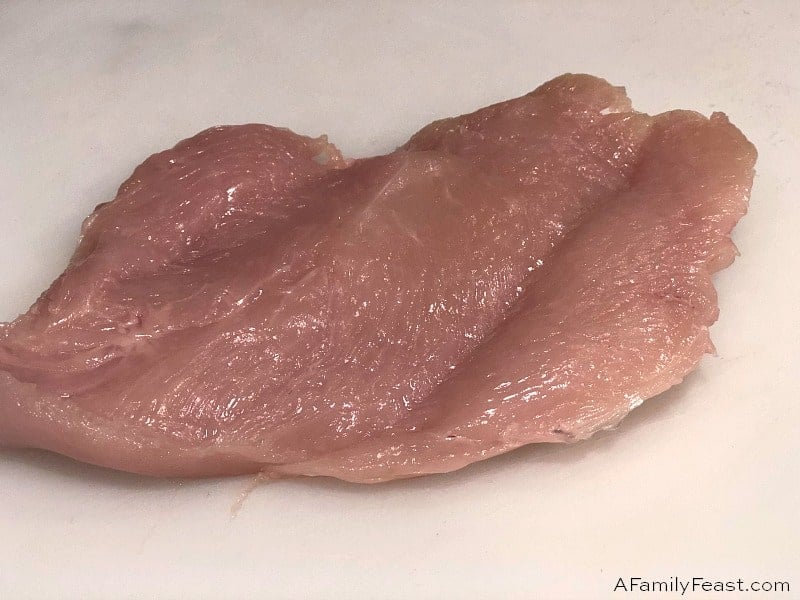
NOTE…If you just need to even out the thickness of a thick breast before cooking, just cut into the thick part and leave the tenderloin as is. This will give you a thick but even piece of chicken before cooking.
Pounding Chicken Breasts
Some recipes (like our Greek Chicken Roulade or Chicken Cordon Bleu) call for chicken breasts to be flat enough to roll around other ingredients. Sometimes butterflying the chicken breast is enough – but other times, you can pound the chicken to a flatter thickness.
Note: If your recipe calls for pounding the chicken to a certain thickness, butterflying first using the steps shown above will ensure that the meat does not shred or break apart as you pound it flat. It will also produce neat, uniform pieces.
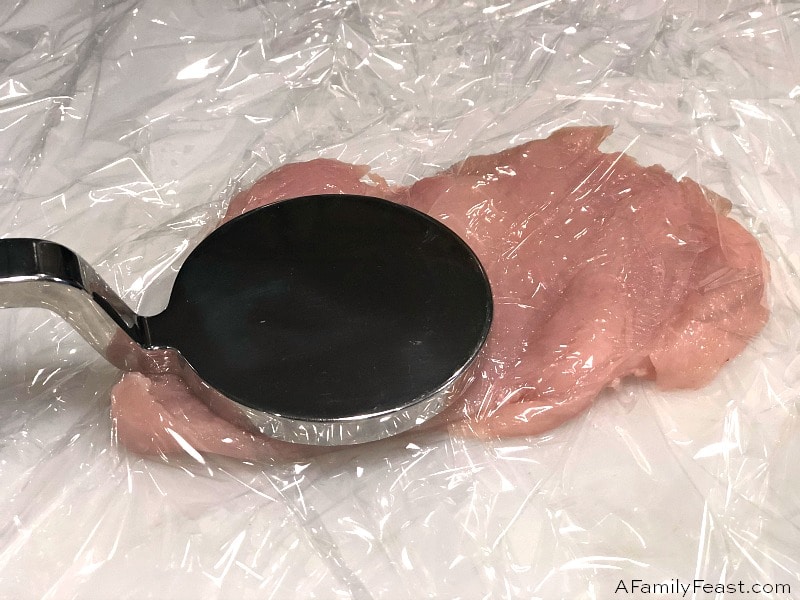
To pound out the chicken breast, lay out your butterflied breast on a large sheet of plastic wrap (skin side up or down at this point does not matter). Cover with an additional piece of plastic wrap and using a heavy flat surface, such as this meat pounder, pound in gentle even hits until the piece reaches your desired thickness. With meat as tender as chicken, we don’t recommend using a textured meat tenderizer (like this) – the chicken will just break apart as you flatten it.
Remove the plastic and proceed with your recipe. Recipes like our Parmesan Chicken Cutlets or Marinated Grilled Chicken Breasts work with butterflied or pounded chicken breasts.
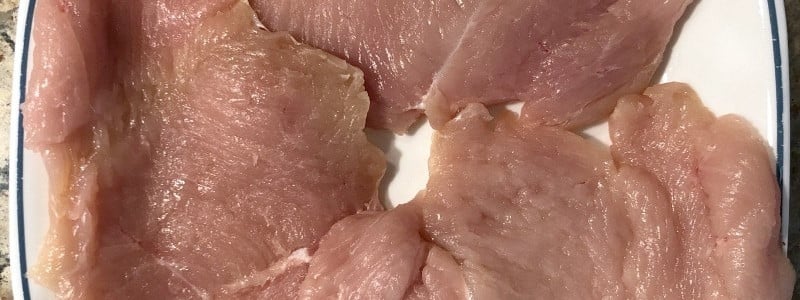
Leave a Comment